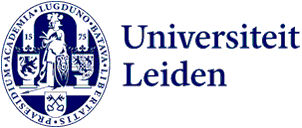
Special training and testing reveal children's potential for learning
Traditional school tests, like the Dutch CITO, largely reflect students' existing knowledge and abilities. However, dynamic testing sheds light on students' learning potential, discovered Mirjam de Vreeze in her PhD research. This approach is especially promising for children with learning challenges, such as dyslexia or test anxiety.

Mirjam de Vreeze-Westgeest has spent nearly twenty-five years working in primary schools as a generalistic orthopedagogue and advisor. Increasingly, teachers were coming to her with questions about alternative forms of assessment. ‘Many schools rely on standardised tests, like the CITO test or AVI reading assessment, to gauge what a child knows and can do. In these tests, children aren’t allowed any assistance beyond brief instructions. While these standard tests are convenient for large-scale use, the drawback is that children with learning difficulties, such as dyslexia or test anxiety, often don’t perform to their full potential.’ This prompted her to investigate whether alternative testing approaches might be more beneficial for these students. On 16 October, she will defend her PhD thesis, Cognitive training and dynamic testing in the school domain.
Learning with others
Dynamic tests draw on Lev Vygotsky's theory of the ‘zone of proximal development,’ which posits that learning occurs through interaction with others. ‘These tests are designed to reveal children’s learning potential,’ De Vreeze explains. In her study, she examined two types of school-based dynamic tests: a cognitive training in maths and a dynamic reading and writing assessment. Children aged seven to twelve participated in the study, with groups including typically developing children, those with dyslexia, and those identified as potentially gifted.
Maths and language rules
Each child received a pre-test, a training, and a post-test, with the same test used for the pre- and post-assessments. The control group only received training after the post-test.’ The cognitive training involved testing and building skills like working memory and metacognitive awareness. ‘For example, the researcher might discuss strategies for tackling tasks and practice maths problems with the students.’ In the dynamic reading and writing test, students received for example guidance on language rules to improve writing accuracy. Initially, all tests were conducted in person, but due to COVID, some were administered online.
‘Gifted children also benefit from support’
Making learning potentieel visible
Both the cognitive training and the dynamic reading and writing tests helped to reveal each child’s specific learning needs more effectively than standardised assessments like the CITO test, De Vreeze found. Gifted children, in particular, benefited from metacognitive training, which teaches them to plan and approach tasks strategically. ‘It’s often assumed that gifted children manage well on their own, but the results showed they also benefit from support.’
Predicting effectiveness of dyslexia treatment
Another noteworthy finding was that dynamic testing could predict the likelihood of success in dyslexia treatment, particularly through writing assessments. ‘There are numerous dyslexia treatments available, which one a child gets is usually determined by local authority contracts with providers. The writing test proved especially useful in predicting treatment efficacy, providing a more targeted approach,’ De Vreeze explained. The fact that some of the tests were conducted online surprisingly had no negative impact, De Vreeze observed. ‘Children learned just as well with remote instruction; the online interaction with the teacher proved to be as effective as in-person sessions.’
‘‘With dynamic testing, teachers can better respond to the educational needs of students’
Towards more inclusive education
De Vreeze advocates for incorporating cognitive training and dynamic testing into the classroom to give teachers deeper insight into children’s potential for learning than standard assessments provide. ‘These approaches would be best integrated as supplements to traditional tests, especially within Plus classes or remedial programmes,’ she suggests. This could enable teachers to address students’ learning needs more effectively, making education more inclusive.
